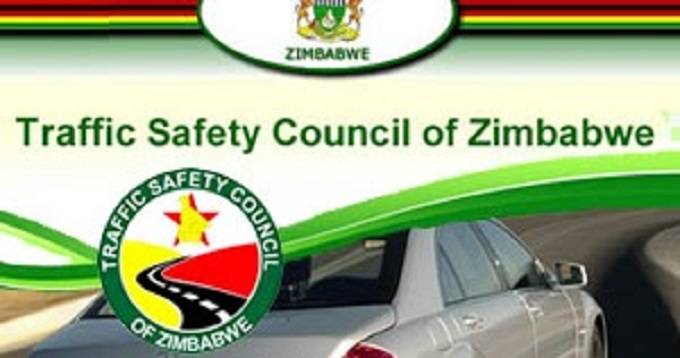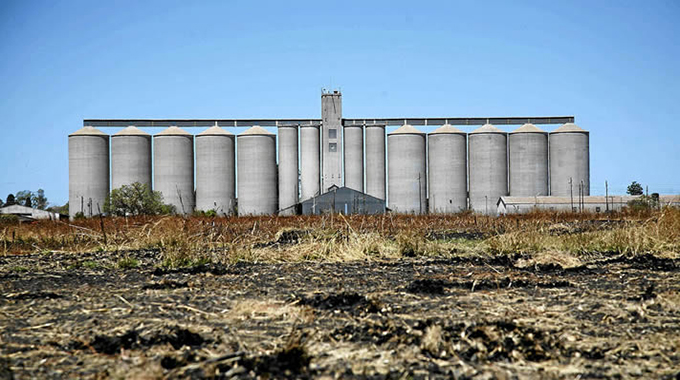Expedite safety on Sadc roads

Gibson Mhaka, Senior Features Reporter
Comprehensive road networks are essential for achieving the goals of regional integration, promoting economic growth as well as facilitating trade and socio-economic ties.
However, the Sadc region, like the rest of Africa is witnessing a road safety crisis leading to some stakeholders in road management and safety defining it as the global capital for road traffic deaths.
Road safety is an important sustainable development issue as illustrated by its express inclusion in the 2030 Agenda for Sustainable Development.
Research has shown that sustainable road networks in the Sadc region, which account for about 20 percent of the region’s cross border trade are essential to achieving most of the goals in the 2030 Agenda for Sustainable Development, especially those related to food security, health, energy, infrastructure and climate change.
The road network has an effect on road safety or crash risk because it determines how road users perceive their environment.
But in reality, road network in the Sadc region, perhaps because of the region’s difficult economic geography – is still very weak in terms of access, and is also characterised by missing regional links.
According to the Sadc Regional Infrastructure Development Master Plan (RIDMP) which is designed to achieve efficient, seamless and cost-effective cross-boundary infrastructure networks to enable regional integration, the region has a poor record of road safety by world standards.
Thousands of lives are lost, a lot of people are injured, and an elevated value of damage is caused to property through road accidents.
Road traffic injuries are now considered to be among the leading causes of death in sub-Saharan Africa, killing more people than tuberculosis, maternal disorders and HIV and Aids.
So dire is the situation that it needs timely intervention by the regional road safety actor, Sadc Protocol on Transport, Communications and Meteorology (TCM) which focuses on areas that contribute to the facilitation of regional integration such as development and maintenance of road infrastructure and regulation of road users.
In Zimbabwe, for instance, according to the Traffic Safety Council of Zimbabwe (TSCZ), the principal agent in promoting traffic safety in the country, Zimbabwe loses about US$406 million annually due to the road traffic injuries.
According to the TSCZ, road fatalities claim an average of 2 000 per year per about 16 million population. Thus, the Zimbabwe road fatalities average is 12,5 deaths per 100 000 population.
It is also estimated that the loss of lives and limbs per year due to road traffic crashes is costing low income nations like those in the Sadc region up to three percent of the Gross Domestic Product (GDP).
According to the latest World Health Organisation (WHO) Global Status Report on Road Safety, Botswana has a death rate of 20.1 per 100 000 population as against the global death rate of 17.4 per 100 000 population while that of South Africa is 23.53 deaths per 100 000 population.
“Road traffic crashes are among the main causes of deaths in Botswana as families continue to lose loved ones as well as productive and skilled human resource.
“The biggest burden was perhaps felt in the health system that carried the bulk of the aftermath of road crashes,” bemoaned health promotion officer for WHO Botswana, Mr Moagi Gaborone recently.
The above statistics show that although Zimbabwe and Botswana are performing better in comparison to other African countries, they are still a big cause for concern for those responsible for transport in the Sadc Member States.
TSCZ director Mr Obi Chinyere said road deaths are a hindrance to development in low-income countries like those in the Sadc region.
“The high number of accidents on Sadc roads not only results in loss of human life with the associated pain, grief and suffering but also has a negative effect on the well-being of the region’s socio-economic development,” said Mr Chinyere.
One of the weaknesses of the region’s regulatory frameworks, Mr Chinyere said, were low fines which were not deterrent enough.
Apart from poor infrastructure, many accidents result from speeding, drunk driving, and other poor judgments, such as overtaking without a clear view of oncoming traffic.
Zambia as stated in the 2019 Second Quarter Road Traffic Accident Report, the country registered a slight drop in road traffic accidents and fatalities.
The reduction in fatalities was attributed to a consortium of targeted road safety interventions undertaken by the Road Transport and Safety Agency (RTSA), the Zambia Police and various stakeholders.
In order to substantially lower the fatality rate on Sadc roads and to approach the road safety issue in a holistic manner, the Sadc Protocol on TCM has implemented a raft of harmonisation instruments on road traffic and safety matters.
The Association of Southern African National Road Agencies (Asanra), an association of national roads agencies or authorities in the Sadc region’s main goal is to enhance regional policy coordination and road transport system integration with the key objectives of improving intra-regional road transport efficiency and lowering transport costs.
Asanra is also calling on countries in the region to use road signs that were approved by Sadc to reduce road carnage. Sadc member countries agreed to have uniform signage having realised that the movement of traffic within the region at times entails the driver to drive from a Portuguese-speaking country into an English-speaking country, and sometimes signage may be in a foreign language that they do not understand.
The Decade of Action for Road Safety 2011–2020, developed by WHO and the World Bank is also another measure adopted by national governments in sub-Saharan Africa to direct substantial resources to stem the increasing burden of road traffic injuries.
Safer roads and the mobility is one of the five pillars of the Decade of Action for Road Safety. The pillar emphasises the need to raise the inherent safety and protective quality of road networks for the benefit of all road users.
It is worth noting that the Decade of Action for Road Safety has been underway for eight years but the number of deaths has remained high.
In comparison to other areas of development, road safety is a major Sadc concern that needs urgent redress.
While it is commendable that the Sadc region is striving to improve on the safety of the use of the region’s road networks, there is strong need for regional leaders to back their grand intentions with financial commitment.
As a measure to improve the region’s road safety, long-distance truck driver from the Democratic Republic of Congo (DRC) Mr John Ekoya suggested that Sadc member states should swiftly standardise their road networks to accommodate motorists crossing from one country to another.
“It is extremely important for Sadc countries to standardise their national road networks to accommodate motorists crossing from one state to another particularly Zimbabwe which is the hub of Sadc’s road network as it links Southern Africa with the rest of Africa,” said Mr Ekoya.
“The Beitbridge-Chirundu which facilitates the movement of millions of people between Southern Africa and central, east and north Africa while also facilitating regional trade requires upgrading as well”.
He said the Zimbabwean government should also quickly upgrade the Beitbridge-Harare highway which undoubtedly handles significant volumes of commercial cargo within the Sadc region.
“It is very dangerous to drive on this route especially because its narrow and there are a lot of cattle along the way.
“Back home in DRC, the Government upgraded one road which was in a terrible state, this road is between Likasi and Fungulume where a distance of 100km would take drivers about seven hours but now they can take one hour on the road,” said Mr Ekoya.
In 2016, Zimbabwe and South Africa held a joint awareness campaign to educate motorists on road traffic regulations and ways to reduce road carnage. The campaign came as major highways in the two countries have become death traps for travelers.
Addressing issues of road safety in relation to women’s needs and supporting studies from the American Journal of Public Health, which says women have a higher likelihood of suffering injuries in car accidents because of safety features which are designed for men, Ms Caroline Moyo, a female driving instructor urged Sadc countries to address the perceived gender-specific disparity.
“When it comes to road safety, female drivers are not as safe as their male counterparts because of safety features which are designed for men. To save lives and debunk the myth that women drivers are more dangerous behind the wheel, the Sadc Protocol on TCM should push for effective safety designs specifically tailored for female drivers,” suggested Ms Moyo.
Economic analyst Mr Munyaradzi Rukanda said road infrastructure in the Sadc region is poorly managed and maintained resulting in increased road accidents and an enormous drain on the region’s human, health and financial resources.
“Road infrastructure in the Sadc region is poorly managed and maintained. If we want the region to prosper, we must invest more in roads and logistics to move people and goods across borders more easily.
“This is because road traffic crashes cause not only suffering but also economic losses to victims, their families, communities and nations as a whole,” said Mr Rukanda.
From Mr Rukanda’s observation, it is evident that current initiatives and levels of investment in the Sadc region are inadequate to stop the predicted rise in road traffic deaths.
With the view that some of the road safety commitments contained in the Protocol on TCM may have proven unattainable or unrealistic, there is need to identify suitable interventions, set achievable safety targets and monitor progress towards achieving them.










Comments